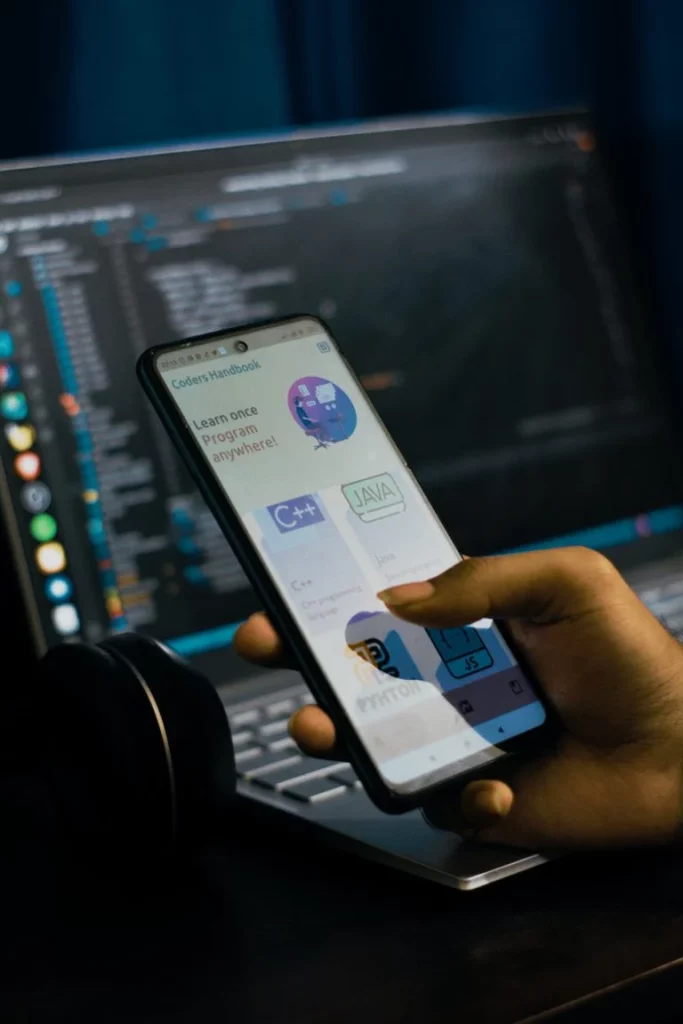It clearly demonstrates that in the saturated app industry, only a select handful good apps are able to entice customers. These are the apps that people enjoy, share with others, and even pay for. Furthermore, they are available in in-app shops. We believe these apps to be successful. And in this essay, we’ve covered seven essential aspects of developing such good apps.
1. Market and Audience
Any app’s success hinges on its ability to do research. It gives you the knowledge you need to build an app based on real facts rather than guesswork. And this is critical for the app’s success. According to CB Insights, 35% of start-ups fail because their product has no market demand. Good research may help you avoid this by determining who will use your app — the audience — and what problem it will answer — the market need. In addition, research informs many of the decisions made in the subsequent stages of design, development, and marketing.
You must analyze your competition as part of the study, employ analytics to obtain important metrics and trends, collect user demographics, and perform surveys for qualitative and quantitative data. If your app concept is unique and you don’t have enough market data, you may take it a step further and create a minimal viable product to collect the information. There are a plethora of minimal viable product examples available to assist you to test your idea and gathering data without having to construct an app.

2. Flawless Design
Your app’s design may make or ruin it. After all, it’s how your software appears, feels, and works. If you get it right, your engagement, retention, and brand reputation will all improve. As a result, we advocate devoting a significant amount of effort to the design process, particularly in UX. Here are a few brief suggestions to think about.
Make a memorable first impression.
Hook customers right away with a pleasant onboarding experience that explains how to use the app and the value it offers. Avoid any friction that may cause consumers to leave, such as superfluous sign-in barriers. Slow loading times can often detract from the first-time experience; preloaders can help with this.
Make the designs more human.
Successful applications make consumers feel as if they’re communicating with a human rather than software. Personalization, emotive graphics and images, effective animations, micro-interactions, and meaningful UX copies may all help to personalize your designs.
Reduce cognitive burden
Users are more likely to have a negative experience and exit the app if your designs require higher cognitive work. So, keep the design basic, recognizable interfaces, easy navigation, consistent design, and chunking the large tasks into bite-sized chunks to reduce the burden.
3. Stability and performance
When using the software, users want it to be speedy, fluid, and snappy. Any delays or crashes throughout the loading process might damage their experience. They are also unconcerned about leaving or deleting the app. According to a Google study, 70% of smartphone users would move to another app if one is too sluggish. Even a small delay of one second to three seconds raises bounce likelihood by 32%. So, in conclusion, your app must maintain a high level of performance.
To accomplish so, you’ll need to invest in high-quality development and adhere to best practices. Here are a few things to think about.
· Use the finest coding techniques available.
· Optimize the app for various devices (particularly low-end devices)
· Use pre-loading/pre-fetching data when appropriate
· Work on optimizing the app start-up time
· Minimize memory usage
· Optimize the app for various devices (especially low-end devices)
4. Right Development Technology
We understand that the technology we chose has an influence on the app’s features, functions, and overall operation. However, there are other factors to consider, such as development costs and time to market. The appropriate technology may help you achieve your goals, whether it’s offering a native experience, developing a rapid MVP to get feedback, or releasing apps for many platforms with a single codebase. You can employ native or cross-platform technology depending on your needs and goals.
Native development
Platform-specific native technologies like Kotlin (Android) and Swift (iOS) provide the finest functionality, features, UX, and performance in native development. There’s a lot of customization, and complete access to the phone’s capabilities, and the possibilities are almost endless. It does, however, come with hefty development costs, a long time to market, and distinct teams for each platform.
Cross-platform development
Cross-platform technologies are a cost-effective alternative to native. They are capable of giving native-like features, experience, and performance to a large extent, despite significant limits. In many circumstances, the advantages of cost-effectiveness, speedier development, and a single codebase outweigh the disadvantages. If you’re a small business with a tight budget, this could be the best solution for you. Furthermore, technologies such as React Native and Flutter are narrowing the gap between what native and cross-platform apps can accomplish.
5. Rigorous Testing
Crashing is one of the most common causes of bad ratings and uninstalls. According to a study, 96 percent of users would leave a negative review and 44 percent would remove the app as a result. That’s a colossal sum of money. Any app that aspires to be successful cannot afford to be damaged in this way. This necessitates the removal of any flaws in the program prior to its release, as well as thorough testing.
Your software must meet a variety of requirements. Usability, performance, stability, security, and other functional and non-functional factors are included. You also have to keep it consistent across a variety of devices, screen resolutions, and use conditions.
Even if you try your hardest throughout design and development, mistakes are unavoidable. At the very least, there’s always space to improve. And it’s via testing that you can improve your software.
At each level of development, it’s best to think about testing early and often. As a result, by the time the final app is available, it has already undergone extensive testing. Due to the enormous number of mobile devices on the market, be sure you test the app on a variety of devices, screen sizes, and networks.
6. Security
Security cannot be considered a nice-to-have feature because the bulk of activities — financial transactions, purchasing, booking, talking, and storing private data — are done on mobile devices and applications. It’s an essential component of your software.
An unsecured app with weak security risks exposing sensitive user data including personal information, payment information, medical records, and so on. As an app developer, it is your job to protect both the data of your users and the reputation of your app.
There are a number of mobile app security measures that you can use to make sure your app is safe. Platform-specific security rules are available for both iOS and Android. Here are some of the most fundamental security needs for mobile apps.
• Store private user data locally on the device using sandboxing and
· utilize HTTPS and SSL protocols for data transport between the app and servers.
• Keep your libraries, SDKs, and other dependencies up to current
• Always audit third-party libraries before using them
• Run a thorough penetration test
• Use appropriate session management
• Follow security guidelines like PCI DDS for payments and HIPPA for medical apps.
7. App Marketing Strategy
No matter how good your app is, if you can’t get it in front of your target audience, it’s doomed. You’ll need a plan to increase awareness, reach out to your target audience, and persuade them to download the app. According to a poll, the number one problem that app developers encounter while developing an app is marketing. Marketing was rated as being twice as tough as design and development. Here are some common app marketing methods to consider if you’re having trouble promoting your app.
Create a landing page
The landing page for your app is where your users may learn more about it while also being persuaded to download it. It may also be used to sign up visitors for launch alerts and collect data before the app is created.
Make use of content marketing.
When compared to many other digital marketing channels, content marketing gives a substantially higher ROI at a lower cost. It can help you raise brand recognition, establish trust and authority, boost organic traffic, improve SEO and ASO, and generate high-quality leads (who are more likely to download your app). For content marketing, you may utilize several sorts of material such as blogs, videos, podcasts, infographics, and so on.
Work on app store optimization (ASO)
ASO is the most important factor in app discovery. Around 70% of mobile users find new apps through app store searches, and 65% of downloads happen as a result of a search. Without a question, ASO is critical to the success of your app. As a result, learn about the elements that influence shop rankings and enhance your business’s visibility accordingly. App name, title, description, URL, reviews and ratings, and a number of downloads are all popular ranking variables in both iOS and Android app stores.
Invest in paid user acquisition
Sponsored user acquisition is when you employ paid marketing campaigns to attract people to download your app. social media ads, PPC campaigns, and in-app advertising is all examples of this. When targeted to the correct population and delivered through the proper media, paid user acquisition may be the primary driver of app installations. However, keep in mind that these campaigns are large expenditures that must be optimized over time in order to be profitable.

